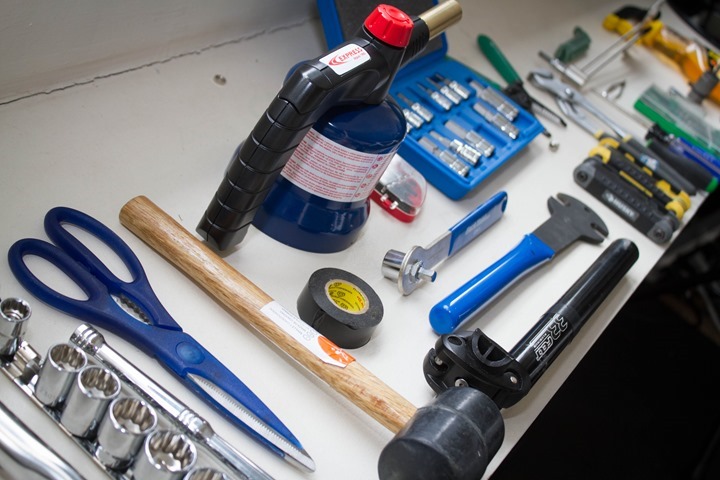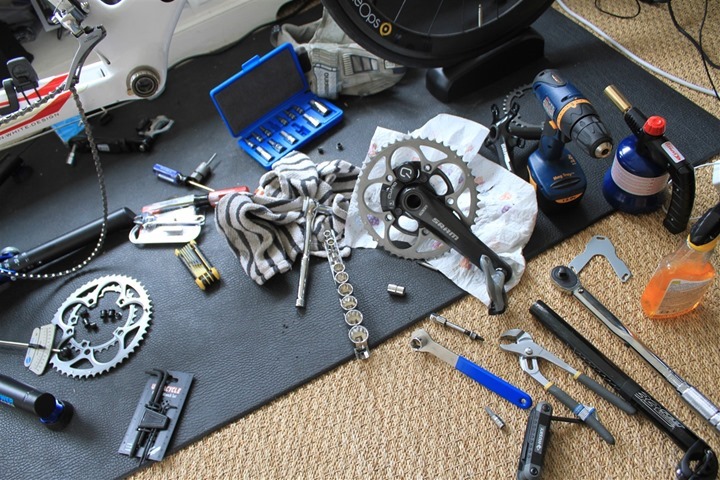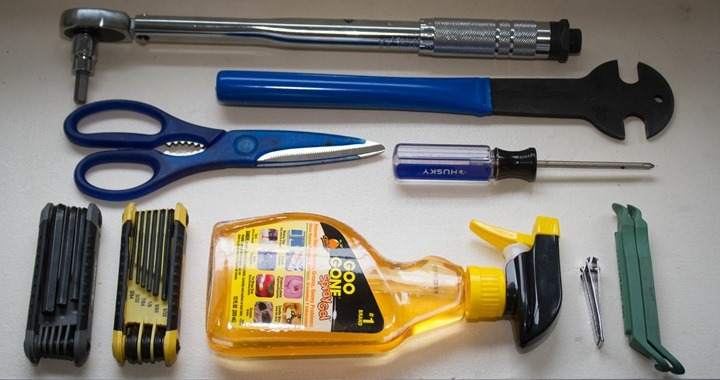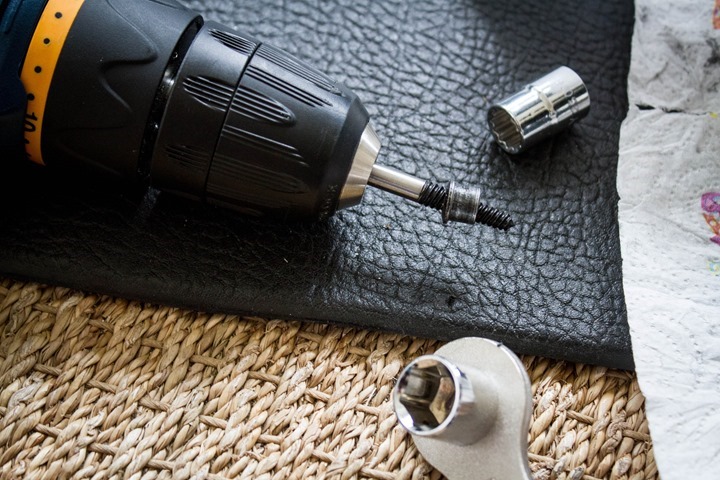Heads up – Massive Sports Tech Holiday Deals List is Live!!! The Garmin Fenix 8 is $250 off (even the Fenix 8 Pro is $100 off!), the Apple Watch Ultra 3 is on sale, the Garmin inReach Mini 2 is $249, the GoPro Hero 13 Black, DJI NEO, and a ton of other brands/deals, including Wahoo, Oura, Whoop, Polar, Samsung, Google, and more than 100 sports tech deals here!
I’m DC RAINMAKER…

I swim, bike and run. Then, I come here and write about my adventures. It’s as simple as that. Most of the time. If you’re new around these parts, here’s the long version of my story.

You'll support the site, and get ad-free DCR! Plus, you'll be more awesome. Click above for all the details. Oh, and you can sign-up for the newsletter here!
Here’s how to save!
Wanna save some cash and support the site? These companies help support the site! With Backcountry.com or Competitive Cyclist with either the coupon code DCRAINMAKER for first time users saving 15% on applicable products.
You can also pick-up tons of gear at REI via these links, which is a long-time supporter as well:Alternatively, for everything else on the planet, simply buy your goods from Amazon via the link below and I get a tiny bit back as an Amazon Associate. No cost to you, easy as pie!
You can use the above link for any Amazon country and it (should) automatically redirect to your local Amazon site.
While I don't partner with many companies, there's a few that I love, and support the site. Full details!

Want to compare the features of each product, down to the nitty-gritty? No problem, the product comparison data is constantly updated with new products and new features added to old products!

Wanna create comparison chart graphs just like I do for GPS, heart rate, power meters and more? No problem, here's the platform I use - you can too!

Think my written reviews are deep? You should check out my videos. I take things to a whole new level of interactive depth!

Smart Trainers Buyers Guide: Looking at a smart trainer this winter? I cover all the units to buy (and avoid) for indoor training. The good, the bad, and the ugly.
-
Check out my weekly podcast - with DesFit, which is packed with both gadget and non-gadget goodness!

Get all your awesome DC Rainmaker gear here!
FAQ’s
I have built an extensive list of my most frequently asked questions. Below are the most popular.
- Do you have a privacy policy posted?
- Why haven’t you yet released a review for XYZ product you mentioned months ago?
- Will you test our product before release?
- Are you willing to review or test beta products?
- Which trainer should I buy?
- Which GPS watch should I buy?
- I’m headed to Paris – what do you recommend for training or sightseeing?
- I’m headed to Washington DC – what do you recommend for training?
- I’m from out of the country and will be visiting the US, what’s the best triathlon shop in city XYZ?
- What kind of camera do you use?
-
5 Easy Steps To The Site
In Depth Product Reviews
You probably stumbled upon here looking for a review of a sports gadget. If you’re trying to decide which unit to buy – check out my in-depth reviews section. Some reviews are over 60 pages long when printed out, with hundreds of photos! I aim to leave no stone unturned.
Read My Sports Gadget Recommendations.
Here’s my most recent GPS watch guide here, and cycling GPS computers here. Plus there are smart trainers here, all in these guides cover almost every category of sports gadgets out there. Looking for the equipment I use day-to-day? I also just put together my complete ‘Gear I Use’ equipment list, from swim to bike to run and everything in between (plus a few extra things). And to compliment that, here’s The Girl’s (my wife’s) list. Enjoy, and thanks for stopping by!
Have some fun in the travel section.
I travel a fair bit, both for work and for fun. Here’s a bunch of random trip reports and daily trip-logs that I’ve put together and posted. I’ve sorted it all by world geography, in an attempt to make it easy to figure out where I’ve been.
My Photography Gear: The Cameras/Drones/Action Cams I Use Daily
The most common question I receive outside of the “what’s the best GPS watch for me” variant, are photography-esq based. So in efforts to combat the amount of emails I need to sort through on a daily basis, I’ve complied this “My Photography Gear” post for your curious minds (including drones & action cams!)! It’s a nice break from the day-to-day sports-tech talk, and I hope you get something out of it!
The Swim/Bike/Run Gear I Use List
Many readers stumble into my website in search of information on the latest and greatest sports tech products. But at the end of the day, you might just be wondering “What does Ray use when not testing new products?”. So here is the most up to date list of products I like and fit the bill for me and my training needs best! DC Rainmaker 2024 swim, bike, run, and general gear list. But wait, are you a female and feel like these things might not apply to you? If that’s the case (but certainly not saying my choices aren’t good for women), and you just want to see a different gear junkies “picks”, check out The Girl’s Gear Guide too.


























I also have a couple of old toothbrushes nearby. Really handy for the cleaning jobs, especially the spokes and the wheel rims.
No housing cutters to deal with brake and shifter housing? (not to mention they are much better at cutting thick wire like brake cables)
Electrical tape I find very useful when I rewrap my handlebars
Nah, that’s beyond my typical skill level of fixing my bike (though, I do need to dive into that as things have become shifty as of late…).
I was in the same boat as you, those awful chainring bolts. Rusted all through. That time I actually drilled them out. And later I got a special tool to hold them, since they have two tiny gaps in the backside. I always bring my tools when I am bike car, I know what I have with me and what I can fix.
Love that FSA uses torque screws for their chain rings. So much easier to deal with then that weird slot like tool Shimano uses as it doesn’t slip as easy. (though have to say multi function screw drivers tend to suck when you need lots of torque so had to get a dedicated torque screw driver)
Suprised Ray doesn’t have any torque bits
No chainwhip? How do you use that cassette remover without a chaninwhip?
Eeek ,somehow missed that in the photo. In a box still from the move. Just added note above. Thanks all!
Do you have a repair stand that you use? or is there one you’d recommend?
Park Tool makes a good, solid, reasonably priced one…and it is much easier to do work when then bike is up in the air. Highly recommend.
I had one, but upon my move I just didn’t have room for it and gave it to my neighbor. Instead, I just place it on a trainer – pretty much works for almost every scenario.
Ditto the chainwhip comment!?
Great kit! One possible addition you might like – Grease Monkey Wipes. Gets your hands clean without burning off a layer of flesh (or leaving a thin line of grime) because they actually got the strength, etc, just right.
I always knew you had a screw loose.
link to i70.photobucket.com
no chain whip?
Goo Gone is a must have in the house! Also- why did the relocation people take your torch?
aren’t permitted to move with flammables, usually same rule with compressed canisters. my last move they took away my fire extinguishers…which really didn’t make sense to me at all.
Have you considered setting up an Amazon webstore for DC Rainmaker-approved products? This would allow your readers to easily find items that you use and like. (I know posts like this and your annual “Gear I Use” posts do this, but a simple storefront would put everything in a central, easy-to-find location.)
+1 to this
Or put your affiliate links in the article, as you deal with each tool (obviously stating at the beginning of the article that they are affiliate links). Means that people can simply buy the item without having to remember its name and/or find it in DC’s A store.
I recall that one of the feedback items from Ray’s survey was that people weren’t aware of the money off offer for his US shop partner (sorry the name escapes me – I’m in the UK) or his Amazon affiliate link. Affiliate links in a useful post like this are good way of reminding readers in a non-salesy fashion (because they’re disclosed and Ray obviously uses the product).
Seems only fair that Ray makes a little bit back for all the value he provides (particularly in those monster product reviews…).
The tool geek in me feels the need give you a few tips:
That’s not an adjustable wrench, it’s a polygrip or slip joint plier. Use them sparingly, they will damage any surface they´re used on. There´s always a better suited, less destructive tool for the job.
Torque wrenches are sensitive and if you abuse them they’ll go out of calibration. Don’t use them to loosen bolts, never ever use them as a hammer and always reset them to zero when done. They are expensive to calibrate. For cheaper torque wrenches it’s usually a better option to buy a new one. They are most accurate around half or 2/3 of their torque range and not very accurate at the extremities of their range. Thus you often need several torque wrenches to accurately tighten both low torque and high torque bolts.
Stay clear of that type of screw extractors/easy outs! If you must use one, put them in a tap handle and work them gently, don’t put them in a power drill! You risk breaking the screw extractor. Conical screw extractors like those will expand the bolt making them even harder to unscrew. There are less conical models that are slightly better.
I recommend the following to extract stubborn bolts:
– Tap the head of the bolt to try and break the bond in the threads. An impact screw driver is ideal.
– Apply heat, cold and suitable chemicals.
– Weld a nut on top of the bolt.
– Screw extractors should be your very last resort. Only use them if you don’t have access to a welding machine and are prepared to scrap the part with the stuck bolt in it. Stay away from the conical ones and buy high quality screw extractors.
I highly recommend adding an impact screwdriver to your toolbox. It’s the first tool I reach for whenever I suspect a screw might be hard to unscrew. If you use e.g. a regular philips screw driver on a stubborn screw you’re likely to slip and damage the screw making it even harder to extract.
How would welding be good for a bike part? Don’t you risk heating the part the screw is in too much? (pretty sure many of the parts a heat treated)
So one of the first pictures shows the torque wrench pretty much coming out of the bottle of gunk remover. I glanced at that picture then had to go into a meeting. Halfway through the meeting for some reason I remembered that picture and for the life of me couldn’t figure out what it was. Drove me crazy. Glad to now see it’s two different items.
Nice Lowe’s commercial!
But really, you need some T-Handle Allen wrenches to make it look like you know what you are doing! My “bike” tool kit is really just scavenged from my auto tools
And a +1 on that’s not an adjustable wrench. It’s what’s usually know by a diluted trademark – Channel Locks.
I don’t like the T-Handle ones quite as much as I’m more of an Alton Brown kinda guy when it comes to wrenches. I want one set that doesn’t become separated (read: lost) with all sizes in one place from really big (removal of crank) to really small.
And you’ve got the whole, if it ain’t broke, don’t fix it. You’ve had it for like a decade!
And what you bring with you when you for a long ride?
Just a small bike wrench multitool, two tire irons, two CO2 cannisters, and a CO2 nozzle, plus a spare tube.
And now The Girl’s kit for the bakery?
That’d be far too large for one post. It’d make my in-depth reviews look tiny.
Most (all?) torque wrenches come with a tool case.
I’d strongly recommend keeping the wrench in its case. They’re quite delicate items and they will go out of calibration if they’re knocked around with other tools.
I’m a competitive track rider, so I’m frequently changing stems and bars for different events. All that stuff is made from carbon these days so am accurately calibrated torque wrench is essential to avoid cracking (over-tightening) or slipping (under-tightening).
Your wife’s creme brulee torch is all the blow torch you’ll ever need!
To the person who asked about proper bike cable cutters…you’ve obviously never paid close attention to the photos of Ray’s bike!
Then crank wrench is obsolete, as we no longer use square taper bottom brackets and self-extracting crank bolts. An 8mm allen, or better yet an 8mm allen socket, is all you’ll ever need.
The pedal wrench is also close to going the way of the Dodo; most modern pedals do have the hex head built into the axle (accessible from the back side) and if they don’t, a 15mm spanner has less chance of slipping and marring the surface.
Guessing he probably uses the Channel Locks to hold the cassette removal tool in place; about the only place I could think of where that would be warranted. I use a crescent wrench, but that’s probably just a preference thing.
Some of the new pedal-based power meters make the rear-entry option with the hex a bit dangerous.
Indeed on the Channel Locks, also useful for getting a good grip on said stuck bolt (one came out that way).
Ray,
Where did this tire iron description “For removing bicycle tires off of wheel frames” come from? Never heard of a “wheel frame” myself, but maybe that is a regional or tri-terminology?
Consider using a fabric or rubber strap wrench to hold onto any cylindrical part initially in place of channel locks. In most cases it will be enough. Channel locks should be a last resort and consider replacing the part afterward.
Respectively, a friendly former pipe fitter/plumber.